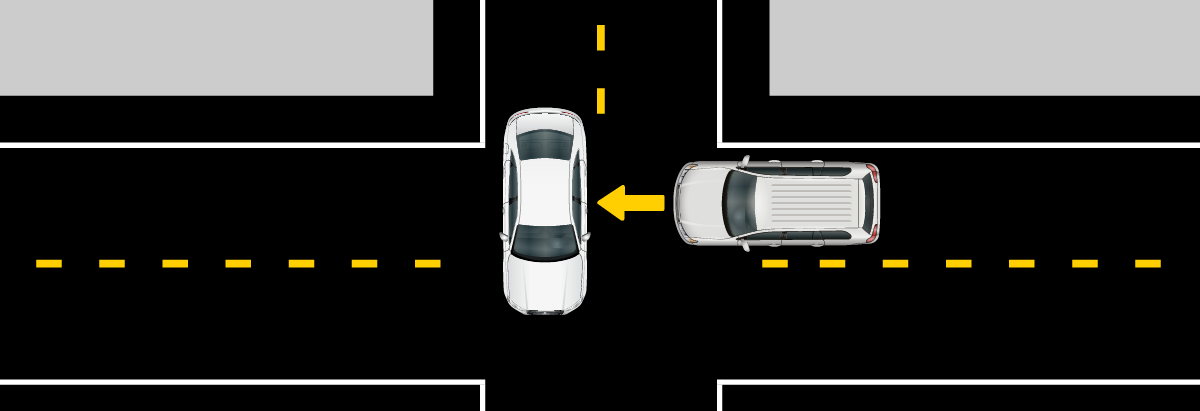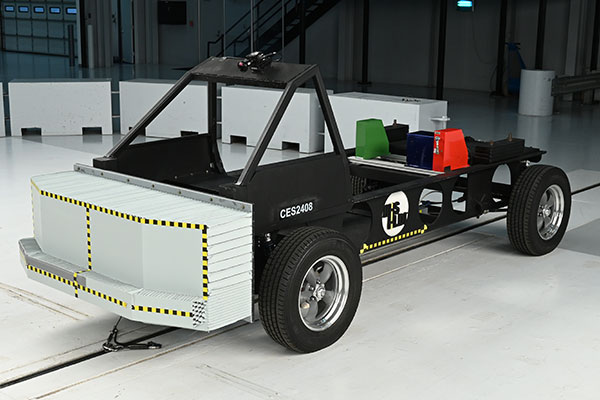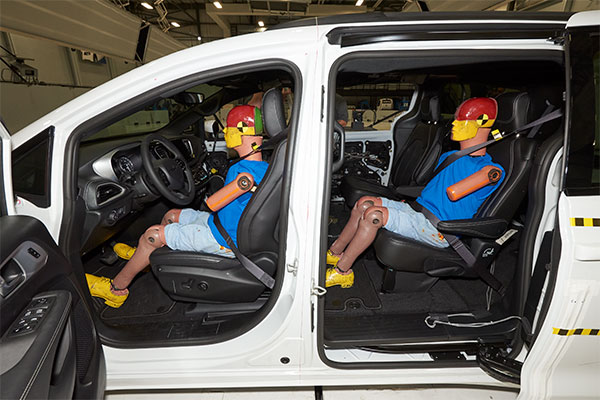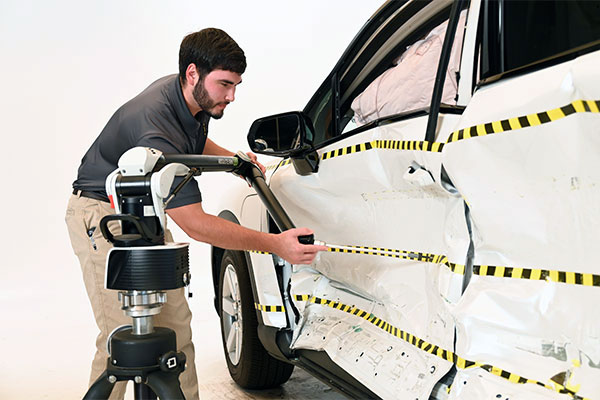Side
The side test represents a T-bone crash in which a typical modern SUV smashes into the driver side of another vehicle. The test was updated in 2021 with a more severe crash and more realistic striking rig.


How the test is run
- A 4,200-pound striking rig, known as the moving deformable barrier, with the approximate height of the front bumper and grille of a modern SUV hits the driver side of the test vehicle at 37 mph.
- The rig is equipped with a deformable honeycomb surface that bends around the B-pillar between the front and rear doors like the front end of a real SUV.
- A SID-IIs dummy the size of a small woman or 12-year-old child is belted in the driver seat, and another is belted in the second row behind the driver.


How vehicles are evaluated
- We measure intrusion into the occupant compartment at key locations.
- Sensors in the head, neck, torso and pelvis of the dummies record injury risk.
- High-speed film and greasepaint help us see whether the dummies’ heads contacted or came near any hard parts of the vehicle or the barrier. If the vehicle’s airbags and seat belts perform correctly, the only place the paint should end up is on the airbags.


Updated side test protocol and technical information
For details on other tests we conduct, visit the About our tests page.